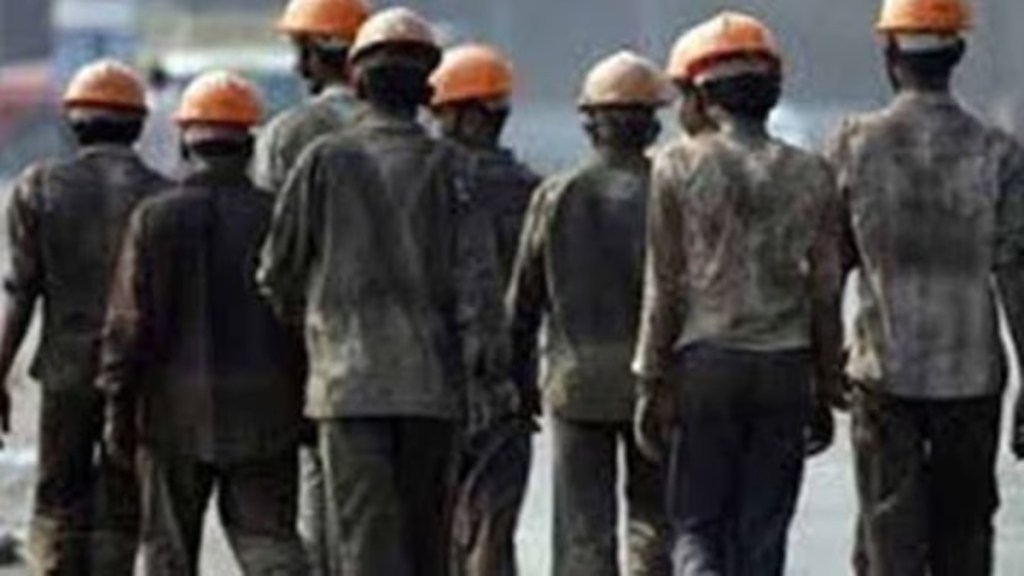The coming Budget may reiterate the government’s intent to operationalse the four labour codes passed by Parliament in 2019-2020, and lay a new road map for their implementation in phases, rather than at one go. It may also unveil a clutch of proposals for the benefit of the unoganised-sector workers.
Official sources said on condition of anonymity that among the proposals being put forth by the labour ministry for the Budget are integration of the e-shram portal, a national database of for informal sector workforce, with the social security schemes run by different ministries, and extension of coverage of EPFO and ESIC benefits to more of them.
“The finance ministry will have to take a final call on these, and that would be closer to the Budget date,” an official said. According to the sources, the Budget is likely to be presented in the fourth week of July.
The implementation of the four labour codes has been due for a long time and the Centre is keen to push all states to finalise the draft rules for smooth and uniform implementation across the country. On Thursday, the union labour ministry asked the states and union territories to review their draft rules with respect to the framework established by the codes, and seek support if needed to expedite pre-publication of rules.
The Budget may not specify any definite time-line under which the four codes will be notified, but could provide a road-map for their implementation, a official said. In the meeting held on Thursday, most states have agreed to review the draft rules and align them with the central codes, the person added.
Akshay Jain, Partner at Saraf and Partners said that since the labour codes will “completely overhaul” the existing employment laws and compliances, the implementation could be in phases.
“While the labour codes retain the inherent structure of protections and benefits provided under the existing laws, employers will have to equip themselves in advance to comply with deviations,” he added.
The Narendra Modi government in 2019-20 had undertaken a “plethora of facilitative reforms” to reduce the multiplicity of labour laws. As many as 44 labour related acts were consolidated into four codes with the objective of reinforcing trade and investment, facilitating ease of doing business and reducing compliances, addressing the issue of decriminalisation, addressing skill development needs, and dispute resolution.
The four codes are: Code on Social Security 2020; Occupational Safety, Health and Working Conditions Code 2020; Industrial Relations Code 2020; and Code on Wages 2019.
Akhil Chandna, Partner, Grant Thornton Bharat said that technically, labour law matters do not fall directly under the Union Budget, but the Budget speech is used as a communiqué to the public regarding the policy framework of the government. “As most of the states are now ready with the draft rules, the Budget may announce a blueprint for the operationalization of new codes.”
On the e-Shram portal – a centralised database of unorganised workers – the government is keen to integrate it with various social security schemes. As of now, e-Shram is integrated with National Career Service (NCS), Skill India, Digital, PMSYM (Pradhan Mantri Shram Yogi Maandhan), etc. But the government is willing to integrate it with PM Vishwakarma, PM SVANidhi, and Pradhan Mantri Awas Yojana (PMAY) among others, to develop the portal as “one stop solution” for unorganised workers. So far, about 30 million workers are registered with e-Shram.
The government also wants to fix the issue of different coverage criteria between Employees’ Provident Fund Organisation (EPFO) and Employee State Insurance Corporate (ESIC), due to which approximately 30 million organised workers are devoid of social security benefits, an official said.
The threshold for PF and ESI coverage is based on notifications issued by respective authorities from time to time. The last increase of threshold for PF coverage was done in 2014, where employees drawing wages more than Rs 15,000 per/month (from Rs 6,500 earlier) were eligible to enroll, and for ESI, the change was made in 2016, where the threshold increased from 15,000 to Rs 21,000.
